Joshua Tree National Park can be found on the west coast in the state of California. The park is unique because this is where two deserts meet. The Colorado and the Mojave deserts combine forces within the park for some fabulous scenery and different terrain. One of the unique features and what the park is named for is the Joshua tree. The Joshua tree has many forms. It can have a trunk like a tree, or it can be short and appear like a bush. Its “leaves” look like a burst of green spines that are clumped together at the ends of the limbs. The overall appearance is that of a tough and hardy plant that can survive the harshest of deserts.
Table of Contents
Cottonwood Spring Oasis
Named for the spring that was created due to earthquake activity, this area of the Joshua Tree National Park can be found seven miles from the south entrance. The water from the spring was used to help gold mining efforts and remnants of an old gold mill can be seen near the spring. This area in the park provides some of the best birding opportunities as the feathered creatures love to hang out here. There is a great campground that has water and restrooms and nice, shaded picnic tables for use during your visit.
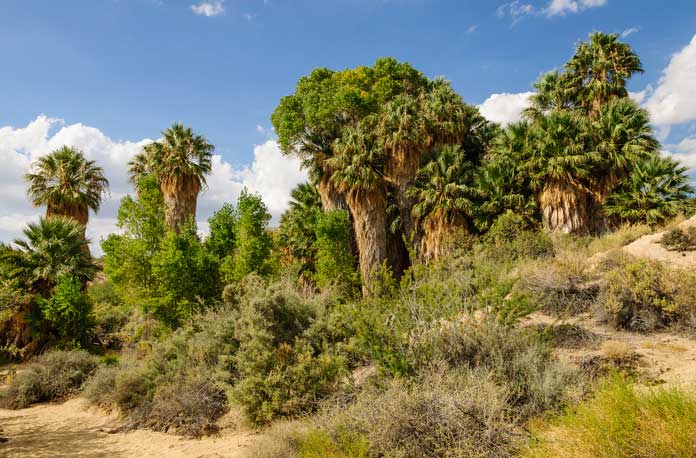
Skull Rock
This rock is hard to miss, and people quickly identify it as Skull Rock! Named for its skull-like appearance, the enormous boulders accumulated small pools of water on them from the rain. The water eventually eroded away the granite, hollowing out specific areas. In this case, it looks like two eye sockets have been hollowed out, making it look like a skull. This is a favorite stop for visitors, and there is also a nature trail close by.
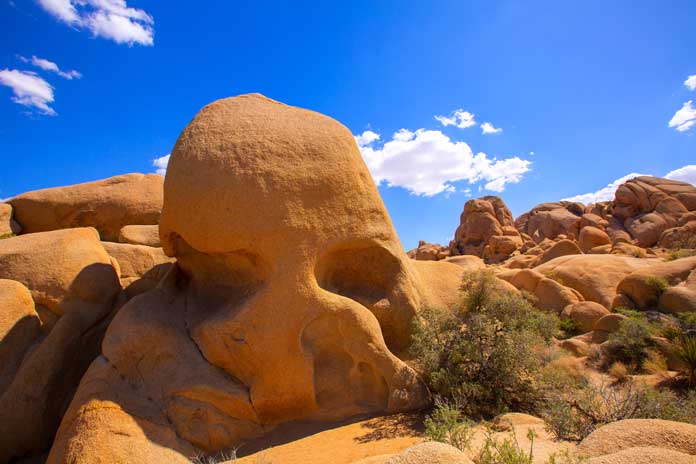
Keys View
The Keys View provides a place to see some of the best views of the Joshua Tree National Park. The San Andreas Fault can be seen runs through the valley you can see below. This fault runs over 700 miles and is of extreme interest to researchers and scientists as they study earthquake and natural disaster activity. The view is up on the San Bernardino Mountains and has excellent views of the Coachella Valley below. The Salton Sea, Santa Rosa Mountains, San Jacinto Peak and the snow-covered peak of the San Gorgonio Mountain are all visible.
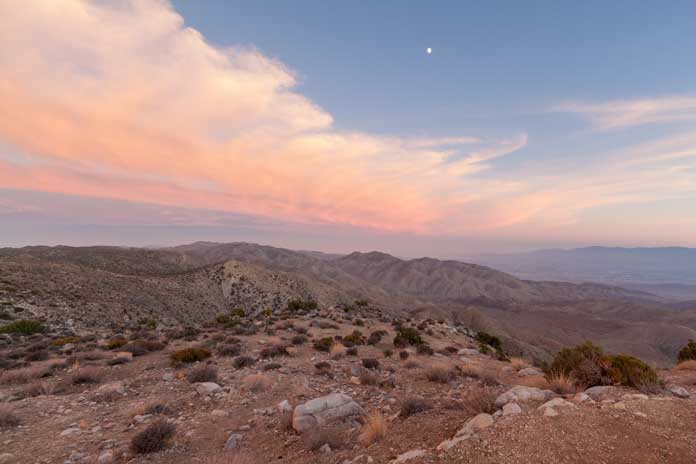
Mastodon Peak
This is a trail that is classified as a strenuous trail, but it may be well worth the climb. It is a 3 miles roundtrip and has excellent views of the Eagle Mountains as well as the Salton Sea. Be prepared to climb up to the 3,000-foot elevation and enjoy the panoramic views of the magnificent deserts.
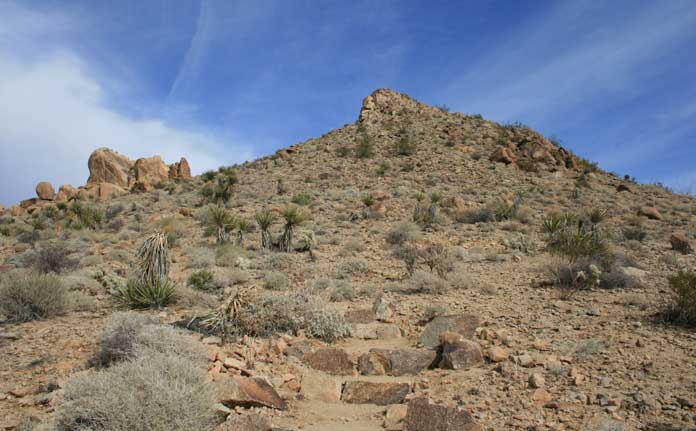
Excellent Rock Climbing
The large boulders and sheer rock walls of the desert mountain provide excellent rock climbing opportunities and draw climbers and enthusiasts from all over. The park has over 8,000 climbing routes and over 400 climbing formations. There are rocks for all levels, and people can purchase a climbing guide or ask about the best places. Hundreds of climbers flock to the area every weekend to experience some of the best climbing around, not to mention the views from the top. Are you a climber? Then you have got to visit Joshua Tree National Park.
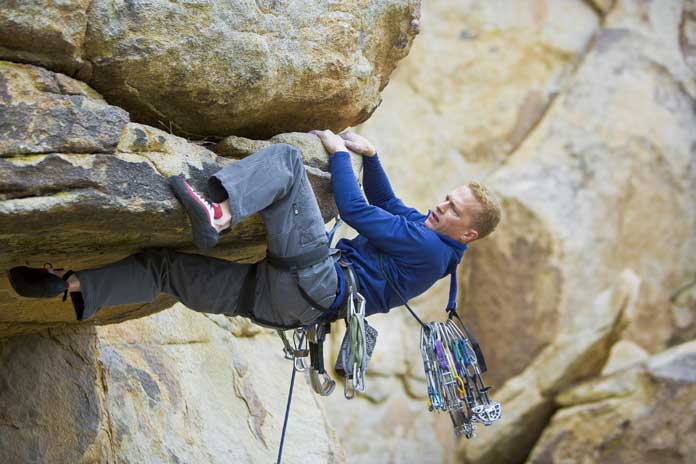
Joshua Tree National Park Visitor Centers
While most parks have one or two visitor’s centers, Joshua Tree National Park has four! The centers are the Oasis, Joshua Tree, Cottonwood and Black Rock Nature Center. There are some great exhibits to see that will help you learn about the area, restrooms, water and a bookstore for your souvenir or book about the area. Joshua Tree National Park rangers can answer any questions you may have, or tell you where the best sites to visit are or the best places to camp.
Nature Trails
Nature trails are usually easy to moderate hikes to learn about the vegetation or unique points of interest. Try the Hidden Valley nature trail which is a 1-mile loop to see a rock-enclosed valley that was initially thought to have been used by cattle rustlers back in the olden days. The Indian Cove nature trail is a little over half a mile and is also a loop where hikers can see Mojave yuccas, desert willows, Indian habitation and possible wildlife. There are several other nature trails to see including ones at Skull Rock, Cottonwood Spring, and Keys View. Try the Arch Rock, Bajada All-Access, Barker Dam, Cap Rock, Cholla Cactus Garden, Hi-View and Oasis of Mara nature view trails for a well-rounded experience at the Joshua Tree National Park. All nature view trails are a little over a mile long or less.
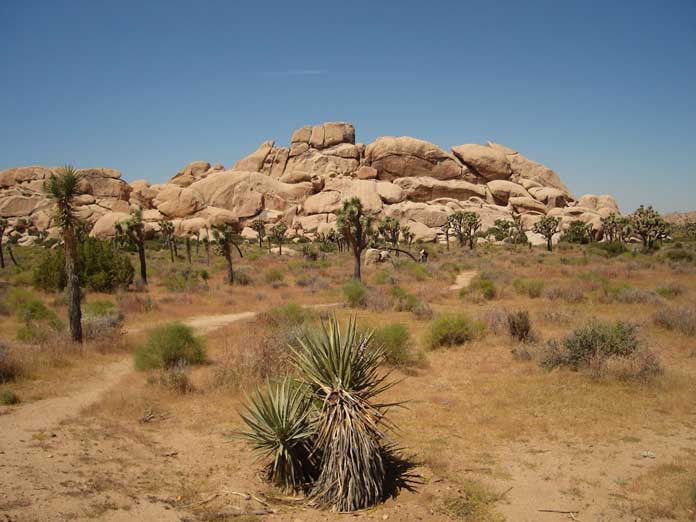
Stargazing in the desert
This southern California park offers a chance for people from the crowded, urban areas of California to see the stars and the Milky Way. The nights of the park have little light pollution to interfere with the amazing star-viewing opportunities that are available. The Milky Way is often clearly visible in the dark skies of the National Park, giving many people their first glimpse of this amazing and humbling sight of the universe. The summer nights are the best time to see the Milky Way, although all year long certain stars, meteor showers, constellations, and planets can be seen based on the different seasons.

Backcountry Fun and Exploration
4-wheel-drive vehicles and mountain bikes are welcomed in the Joshua Tree National Park, and there are plenty of dirt roads to explore in the desert. The Old Dale Road covers 23 miles and there several side roads the detour off and lead to old mines and residences. The Berdoo Canyon Road has 11 miles in the park and the last three out of the park. It runs past the ruins of the Berdoo Camp that was created in the 1930s by the builders of the California Aqueduct. Covington Flat has views of some of the best of the Joshua trees and native vegetation of the area. Some of the most significant Joshua trees can also be seen on this drive, and the end views are lovely. The journey towards the end is steep, but you will be able to see Palm Springs and surrounding mountain ranges for an extraordinary picture.
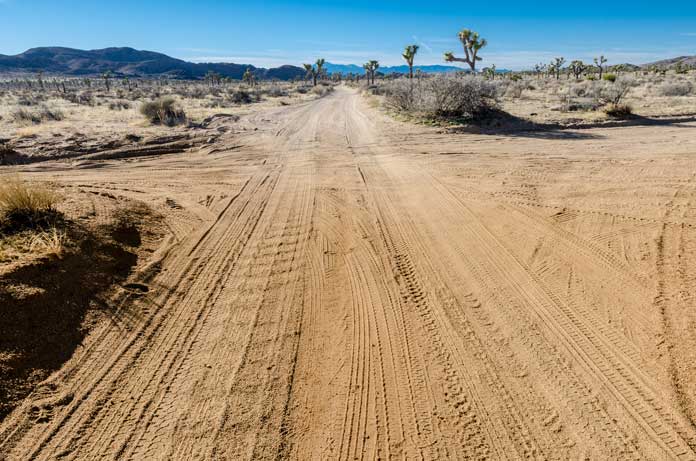
The Beautiful Southwest
Joshua Tree National Park has dunes, dry lake beds, towering mountains, an oasis and flat valleys all with unique vegetation and wildlife that call this desert home. The Joshua trees are unlike any other tree you will ever see, and some are huge! The sharp, spiny leaves bristle out from the ends of the branches and “forests” of them can be found in the park, giving this area its name. See the desert life for yourself and maybe even a glimpse of the Milky Way galaxy.



